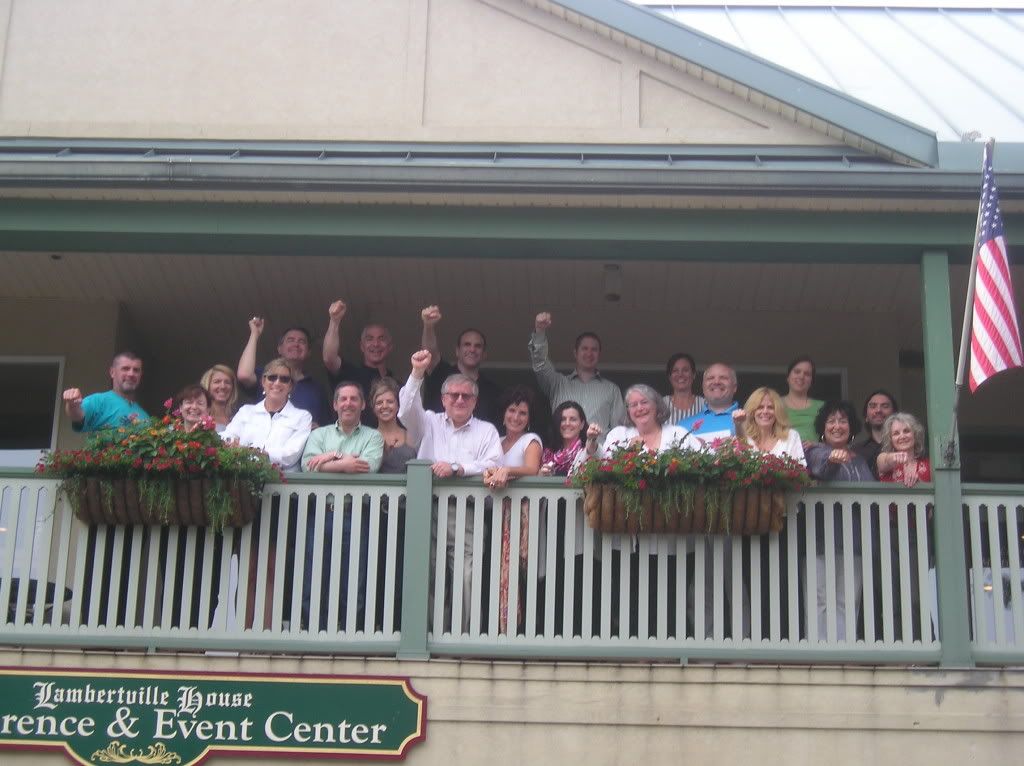
Last week, June 16-18, twenty incredibly wonderful entrepreneurs gathered in the quaint town of Lambertville, NJ, in the conference center of the Lambertville Inn, with Michael Port, of BookYourselfSolid fame. For pictures, check out my facebook page.
A lot was covered, with everyone coming in at different levels, but I wanted to share with you some of the tid-bits from the weekend. Enjoy…and *consume* them!
1. Target market is EVERYTHING. (I tell my clients this ad nauseum.) As with my own clientele, 85% of the people in the room (out of 20) either had no target market, OR didn’t have a narrow enough one. NEW TIP: you can choose a target market around a common interest of theirs: 2 examples that came up—“golfers,” even if you do not sell anything for golfers, but it’s a strong hobby of yours; or “Christians”—even if you are not selling a Christian item. This is actually a brilliant way to instantly accelerate the “trust-factor”—because you will have an emotional bond with them that is stronger than anything else.
2. Imperative question: What kind of business do I want to be in? How do I really want to spend my day? Do I really want to be on the phone?? Do I really want to do group calls? You answer determines your business model.
3. Information Products—worry less about your price, and more about how many units you’re selling because that is the indicator of how many clients you’ll get.
Must help them “consume” your products with immediate and compelling follow-up.
4. How are you doing with your processes? Like, the steps you go through when doing anything for business? You should have them written down so that if something happens to you, someone else can step in, take over the steps, and know when and where to implement them. For instance—getting out your email newsletter involves a certain # of steps. Write each one down. Then do it for getting a blog post out, etc. TEDIOUS work, but essential.
5. Have you planned out your deliverables for the next 12 months? What you must produce, how much it will cost you, how much it will make you (for each one). Then, break that into 6 month and 3-month deliverables.
6. Look into “live support” software! A window pops up on your screen so you can see when anyone is on your website!! Then you can do and introduce yourself to them and ask if you can help. Cool, huh?! (Ask your web-designer about it.)
7. Put your opt-in box on the bottom of EVERY BLOG POST!
8. Getting lots of mysterious spam lately? It could be because you have your email address on your site with the @ sign. Change @ to this exactly: “at”
9. Some URL’s to check out:
www.Gomockingbird.com—design the layout of your website with this cool tool, and then send it to your graphic designer!
www.Basecamphq.com –manage all of your products. People swear by it. I’ve never used it.
www.Backpackit.com—if you’ve got a team; this is great. People at the seminar were raving about it. Or www.37signals.com that includes the 2 above, plus others.
www.Highrisehq.com–a web-based CRM software that prepares you for your next call, meeting, pitch, follow-up, and sale.
www.Uberview.com—plugin that pulls in all twitter mentions into your blog comments.
www.Solid.ly—(One of Michael’s new businesses): Simple, sound and satisfying daily activities to build your network and get booked solid. It’s in beta right now, so you can sign up to be one of the first to try it!
What from this list stood out the most for you?






 So in this session, we delve deeply
So in this session, we delve deeply

